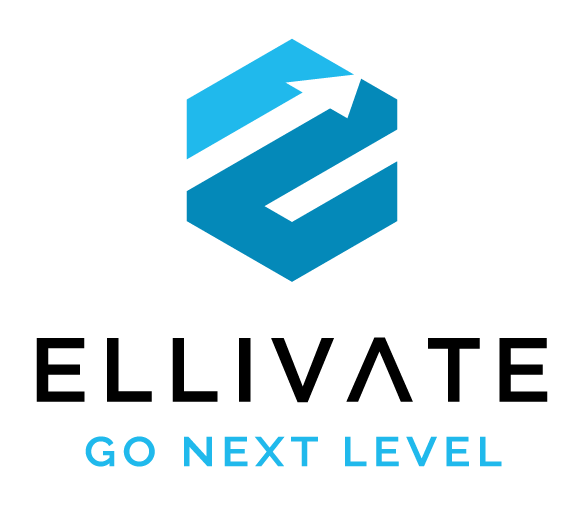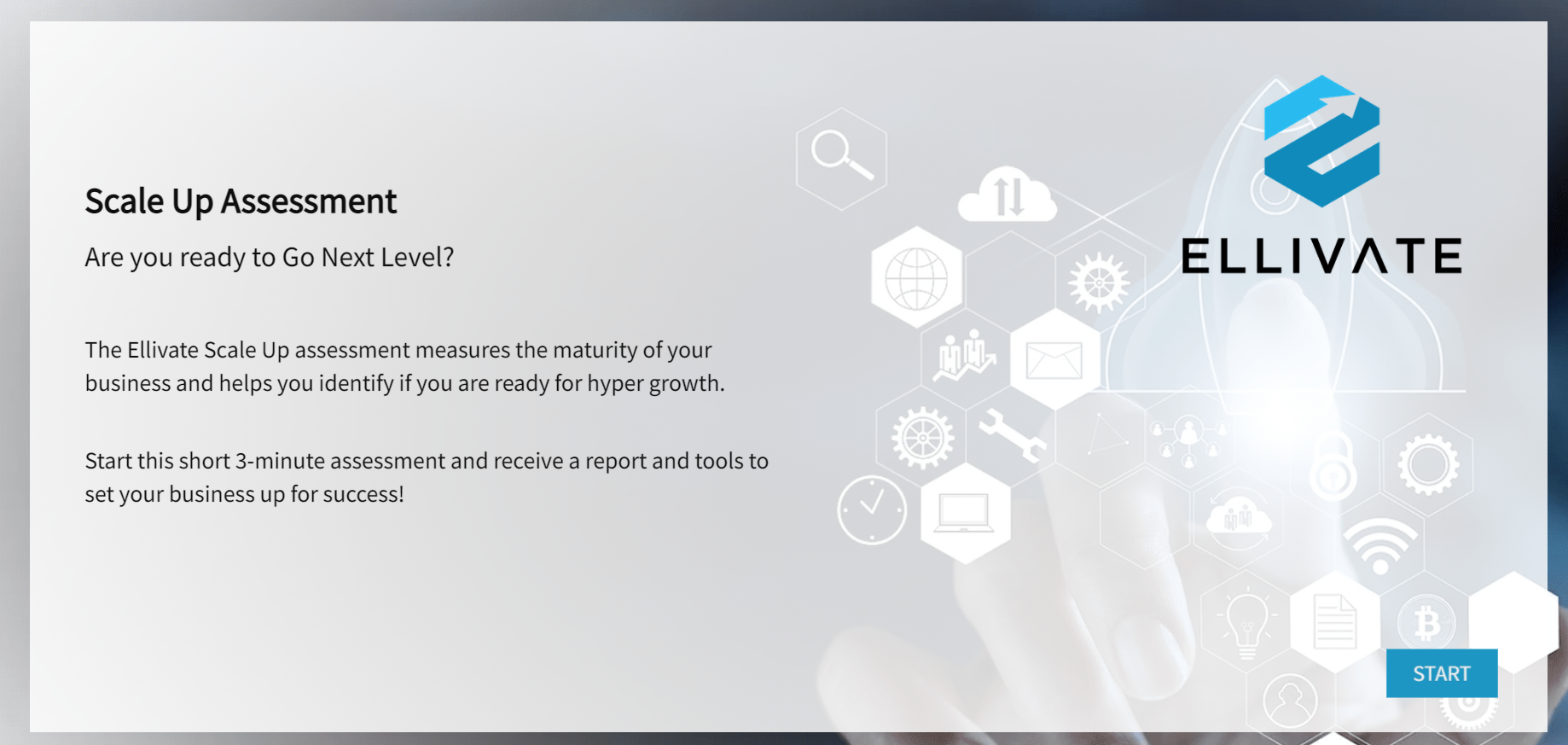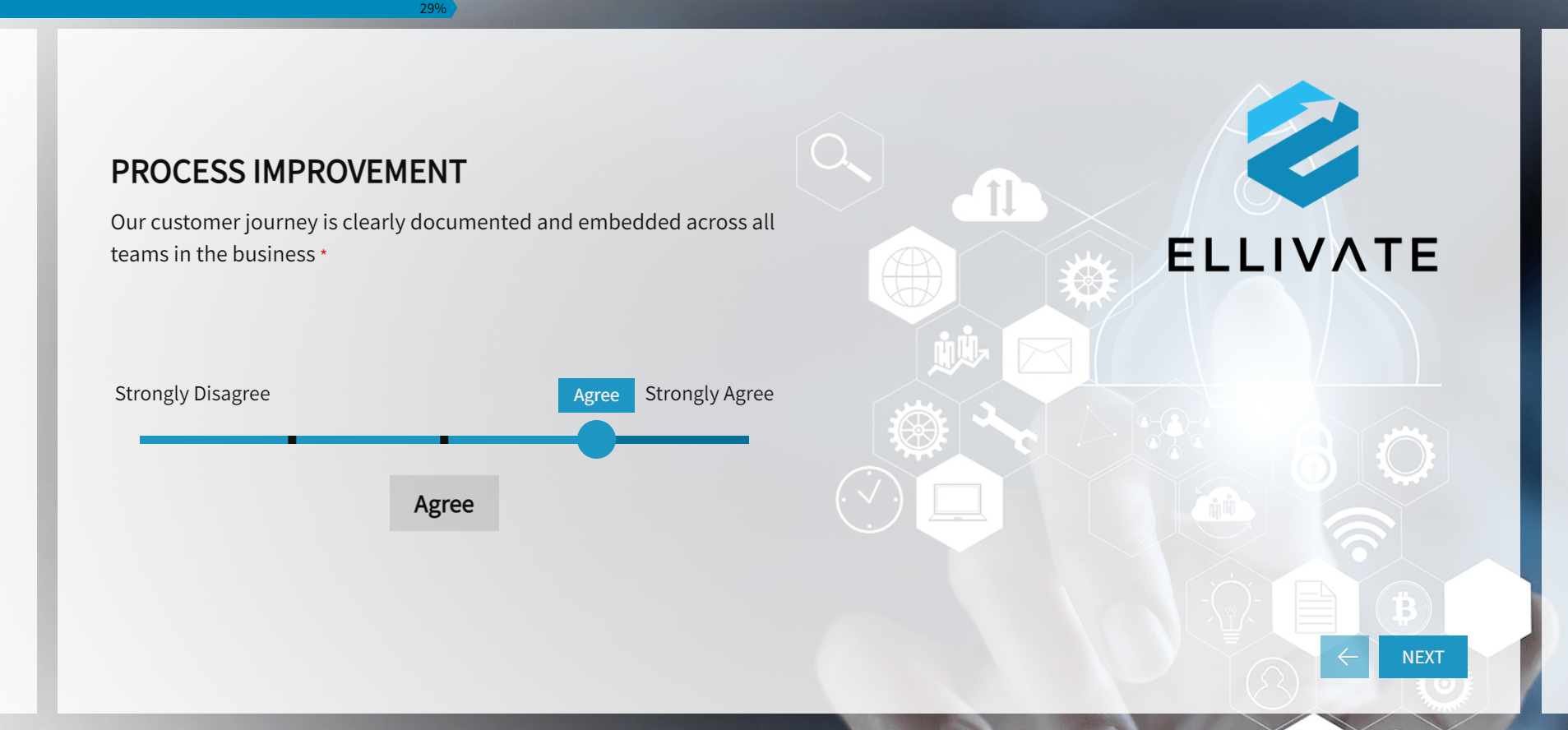“Just go, just grow, whatever it takes”: That’s often a useful maxim for startup businesses to break through and scale up. But when their rocket starts to reach full throttle on its way to new, unexplored spheres, they better have the right gear and processes on board. That’s where Ellivate Consulting comes in.

From specialization to powerful consulting frameworks
Chris Ellis is the founder of this boutique consultancy based in Sydney, Australia. Thanks to 25+ years of senior executive experience in finance and tech, he developed specialized know-how in transformational change, growth strategy, people development, and leading global sales teams. Chris and Ellivate are all about helping recurring revenue businesses create repeatable and scalable processes to reach their revenue goals.
Ellivate uses Pointerpro to deliver its consulting services to a broader audience. How? By building online assessments with auto-personalized PDF reports, of course. Pointerpro’s very own Chris, our Product Marketer, sat down for a quick chat about Ellivate’s consulting methodology and more.
What does your ideal customer look like?
We serve any type of recurring revenue business. They’re often SaaS companies, but we don’t specialize in any particular industry. They tend to have similar challenges and needs that we work on with them. Types of organizations we’ve worked with were developers of recruitment platforms, cybersecurity applications, and also platforms for NDIS the National Disability Insurance Scheme that funds costs associated with disability in Australia. So quite diverse.
The ideal customer would resemble this: Organizations, with a staff of between 50 and 200 people, on a scaling journey. Often they’ve gone from being a founder-led business to now having hired their sales teams, and their customer success teams, and starting to experience what we call “chaos in the business.” That’s where we identify they don’t have the right systems, frameworks, and processes in place. So we come into play to work with the go-to-market teams and change that.
What end result do you aim for when working with your clients?
So our ideal end result for them is the achievement of their revenue goals. In the current market, that predominantly means: sustainable profitable growth. A lot of SaaS businesses over the last few years have been very focused on growth at any cost. We focus on turning that into sustainable and profitable growth for them.
That really implies creating efficient and effective processes for their sales and customer success teams. So it doesn’t matter whether they’ve got five people in those teams or five hundred. What we want them to have is a consistent way of selling and creating recurring revenue.
What is your consulting methodology to help these clients?
We’ve built a 12-step framework. One that is predominantly focused on two pillars: revenue operations and revenue enablement.
With six steps around revenue operations, on the one hand, we help organizations perform through productivity: the right processes and the right operating rhythms. On the other hand, we zoom in on data and analytics: the metrics to measure success for their organization.
The other six steps around revenue enablement consist of aligning the messaging between teams. It’s one of the biggest challenges we come across. Whether it’s marketing, sales, or customer success teams that communicate internally or whether any of them is communicating the value propositions to the market, consistency is key. The other part of the enablement pillar puts the right training and coaching in place for these go-to-market teams.
Digitalizing the consulting frameworks as lead magnets, but also beyond
What were you aiming to solve when you came across Pointerpro?
Our own biggest challenge was generating more leads for Ellivate. Rather than just relying on outbound activity, we wanted to attract more people’s attention and get them to reach out to us. We were looking for lead magnets, so to speak, to ultimately get more names into our CRM and to immediately spark engaging conversations with these prospects, going forward.
Did you look at other solutions before choosing Pointerpro?
We looked at a few solutions. The first one was a system called Brilliant Assessments. We actually did go into that platform and played around on it to see what that was like and compared that to Pointerpro. Another one we looked at was called “Assessment Generator.” We had a meeting with that organization to see what they could offer us.
We really analyzed our main evaluation criteria: user-friendliness, user experience, and a quality report to deliver added value to any responding prospect.
I had mapped out how I wanted the assessment to work and the PDF report to come out at the end and truly found that there was a lot less complexity with the Pointerpro platform. When we were testing Brilliant Assessment, for example, we found that it was a lot slower and we had some clunkiness issues with it. So in summary, the three factors for us to go with Pointerpro were: the quality of the PDF reports, the reduced complexity of the calculations, and then the speed of use.
What questionnaires and report templates did you build with Pointerpro?
The biggest one was based on our 12-step framework, that I mentioned earlier. We wanted to give prospects a flavor of the deep dive that we would do going into their organization – and make them familiar with the 12-step framework.

So it wasn’t just a quick survey and they’d get a score at the end. We created a 13-question assessment – built around our framework – and called it the ‘Scale Up Assessment”. An organization that would complete the assessment automatically received a detailed eight-page report, tailored to their answer outcomes, with real added value, specifically for them.


That was the first one we did and now we’ve just gone live with a DISC assessment as well. This one is around personality and behavioral profiling and will lead to a more detailed program that we offer around DISC. And we’ve got some plans going forward for an assessment for financial service organizations too.

“The three factors for us to go with Pointerpro instead of competing solutions? The quality of the PDF reports, the reduced complexity of the calculations and then the speed of use.”
Ok, so things really seem to be catching on with lead-generation assessments. Have you looked into developing assessments for other purposes as well?
Well yes, actually. When we go into an organization to do a deep dive, that can be quite costly for some organizations. So now we’re looking at enhancing our initial lead generation assessment and developing it into a middle-ground solution. In other words: a much more detailed assessment.
The goal is then to charge a fee for that very detailed assessment and PDF report, providing them with access to our know-how and frameworks at a lower price than what us having to physically go into their business would cost.
What has been your overall experience with Pointerpro? Are you satisfied with the way things have gone, so far?
Yes. First of all, we get a lot of great feedback from prospects who’ve completed one of our assessments. It’s just great because they get this quality report and from our side, we can use that in our discovery sessions with them to explore further around their needs. So far, we’ve had around 600 people using the assessment. In terms of user experience, people find the assessments quick and easy, and they’re surprised by the level of quality of the output.
“So far, we’ve had around 600 people using the assessment. In terms of user experience, people find the assessments quick and easy, and they’re surprised by the level of quality of the output.”
Any important tips you would share with future Pointerpro users?
Yes, I think the biggest one would be this: really planning and mapping out the different variables of your assessment, beforehand. It makes it much easier to build the questionnaires and ultimately the custom reports that will be generated automatically. For the detailed assessment we are going to monetize, the first version that we’re currently working on has about 25 to 30 variables that could come out of the assessment. We’ve also been playing around with about 80 variables. So definitely: plan first.
The second tip is if you’re using Pointerpro assessments as a lead magnet, look to automate where you can. We use Zapier to integrate the contact information of respondents into our CRM.
Sounds like you practice what you preach to your clients, documenting processes and automating where you can. Thank you so much for this interview.
Fantastic. Thanks. It’s been great working with you guys over the past period.



